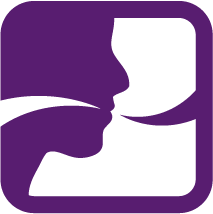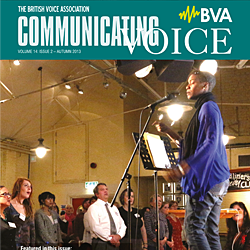About the Association
Van Lawrence Prize 2018
Factors influencing pre- and post-operative voice therapy – (abstract)
Anna White
Aim:
To explore the factors influencing pre and post-operative voice therapy in patients undergoing phonosurgery for benign vocal fold lesions.
Introduction:
Phonosurgery for benign vocal fold lesions (BVFLs) demonstrates positive acoustic, perceptual and quality of life (QOL) outcomes1. Voice therapy (VT) delivered pre and post-operatively improves QOL and acoustic parameters of the voice2,3. However, what constitutes VT in this population is poorly described and documented. Voice therapy is a complex intervention with multiple interwoven parts. Although schedules detailing therapy content, duration, timing and intensity are emerging for patients undergoing primary VT4-9 there are additional and unique complexities which must be considered in phonosurgical patients including surgical preparation, wound healing and epithelial mobilisation following surgery.
Literature Review: Methods and Findings:
To explore what is currently known about this topic, a comprehensive, systematic literature review was undertaken. Articles investigating voice or surgical outcomes after phonosurgery for BVFLs WITH discussion of VT content, timing or duration were included. 380 articles were identified and after exclusions for relevance, duplications, and lack of VT provision or discussion, 16 articles were reviewed and critically appraised. Findings confirmed significant limitations both in the quality of study designs and the reporting of the VT intervention. Information about VT was generic with wide variations in practice. Variability is an inevitable facet of any complex intervention and tailoring an intervention to a patients’ individual circumstances must be embraced in clinical practice. However, of equal importance is the need to develop an evidence base for interventions. The MRC’s framework for developing complex interventions highlights the role of preliminary modelling work10 and involves generating an in-depth understanding of the component parts of the intervention11 thus leading to the next stage of this research project, which aimed to explore the factors influencing pre and post-operative intervention.
Methods:
Semi-structured interviews were conducted with ten expert voice therapists working in multidisciplinary voice clinics in England. Participants described the typical content, timing and intensity of VT intervention for patients undergoing phonosurgery for BVFLs. Variations in practice were explored with rationale and participants’ views on optimum intervention were discussed. The Framework Method,11 a type of thematic analysis, was used to facilitate analysis.
Results:
Participants described the intervention in detail, with significant areas of consensus, such that a comprehensive picture of pre and post-operative VT could be formulated. Factors contributing to variation could be grouped into four themes. 1) Pathophysiological factors, 2) patient factors, 3) therapist factors, and 4) service factors. VT intervention varied according to pathophysiological factors which included the type of lesion, the extent and detail of the surgical procedure undertaken and the presence of scarring or tethered mucosa. Patient factors related to their individual goals, vocal requirements, motivation and compliance. Individual precipitating factors such as vocal trauma and laryngeal irritants and the presence of a muscle tension component in the laryngeal gesture influenced intervention heavily. Therapist factors related to a therapist’s clinical experience with BVFLs, their understanding of wound healing, epithelial mobilisation and motor learning theory, and their interpretation of perceptual, acoustic and endoscopic assessment findings. These factors influenced the therapist’s aim of intervention and choice of direct techniques. Finally, intervention varied according to service factors which included the strength of the multidisciplinary team, referral processes, access to surgical information, the ability to provide continuity of care and in many cases issues of capacity. Participants described their beliefs underpinning decisions, though did so with concern and doubt as to their rationale; acknowledging that decisions were often made in the absence of an evidence base.
Views on optimum treatment highlighted the importance of both pre and post-operative intervention. Pre-operative input would comprise education, advice and preparation strategies plus direct voice therapy if an additional MTD element was suspected. Exercises aimed at re-establishing the mucosal wave, would be taught pre-operatively and re-introduced early on in the post-operative phase. Post-operative work related to voice care, reducing inflammation and scarring and the introduction of exercises to improve epithelial mobilisation. Continued intervention would follow where underlying causative factors needed further work. The use of endoscopy to guide intervention and speed up exercise progression was also referred to.
Conclusions:
The literature review highlighted the paucity of studies describing VT content, even where studies specifically aimed to consider the impact of VT on phonosurgical outcomes. Subsequent interview data explored the multitude of factors influencing VT intervention in this specific population and in so doing, provided significant advances in our understanding of treatment schedule iterations for this population. This study has identified areas of consensus and reasons for variation in pre and post-operative VT. Further consensus work in the form of a Delphi study, is now proposed together with patient involvement work to ensure acceptability of an agreed intervention. This can then be tested for proof of concept and effectiveness.
References:
- Akbulut, S., Gartner-Schmidt, J., Gillespie, A., Young, V., Smith, L. And Rosen C. (2016) ‘Voice Outcomes Following Treatment of Benign Midmembranous Vocal Fold Lesions Using a Nomenclature Paradigm’, The Laryngoscope, 126,(2) pp.415-420.
- Ju, Y., Jung, K-Y., Kwon, S-Y., Woo, J-S., Cho, J-G., Park, M., Park, E-H. and Baek, S-K. (2013) ‘Effect of voice therapy after phonomicrosurgery for vocal polyps: a prospective, historically controlled, clinical study’, The Journal of Laryngology and Otology, 127, pp.1134-1138.
- Tang, S. S and Thibeault, S.L. (2015). ‘Timing of Voice Therapy: A Primary Investigation of Voice Outcomes for Surgical Benign Vocal Fold Lesion Patients’, Journal of Voice, 31(1) pp.129.e1-129.e7.
- Burg, I. Meier, B. Nolte, K. Oppermann, T. Rogg, V. And Beushausen, U. (2014) ‘Selection of Voice Therapy Methods. Results of an Online Survey’, Journal of Voice, 29, 6, pp.776.e1-776.e6
- Roy, N., (2012) ‘Optimal dose-response relationships in voice therapy’, International Journal of Speech and Language Pathology, 14, (5) pp.419-423.
- De Bodt, M., Patteeuw, T. & Versele, A. (2015). Temporal Variables in Voice Therapy. Journal of Voice, 29(5), 611-617.
- Patel, R. R., Bless, D. M. & Thibeault, S. L. (2011). Boot Camp: A Novel Intensive Approach to Voice Therapy. Journal of Voice, 25(5), 562-56.
- Gartner-Schmidt, J. L., Roth, D. F., Zullo, T. G. & Rosen, C. A. (2013). Quantifying Component Parts of Indirect and Direct Voice Therapy Related to Different Voice Disorders. Journal of Voice, 27(2), 210-216.
- Wenke, R. J., Stabler, P., Walton, C., Coman, L., Lawrie, M., O'Neill, J., Theodoros, D.&Cardell, E. (2014). Is More Intensive Better? Client and Service Provider Outcomes for Intensive Versus Standard Therapy Schedules for Functional Voice Disorders. Journal of Voice, 28(5), 652.e31-652.e43.
- Gale, N. Heath, G. Cameron, E. Rashid, S. and Redwood, S. (2013) ‘Using the framework method for the analysis of qualitative data in multidisciplinary health research’, BMC Medical research Methodology, 13; 117 Available online: http://www.biomedcentral.com/147-2288/13/117
- Craig, P. & Petticrew, M. (2013). Developing and evaluating complex interventions: Reflections on the 2008 MRC guidance. International Journal Of Nursing Studies, 50(5), 585-587.
- Sermeus, W. (2015). Modelling process and outcomes in complex interventions. In: Richards, D. & Hallberg, I. (eds.) Complex Interventions in Health: An overview of research methods. Oxon, UK: Routledge.

 Join us Now!
Join us Now! our newsletter
our newsletter free voice care leaflets & information – download here
free voice care leaflets & information – download here Help our work by donating while you shop
Help our work by donating while you shop